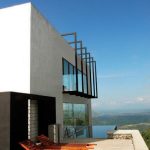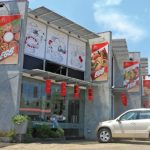-
Editorial
July 2010
Creativity is often thought of as the ability to generate ideas that are both innovative and functional.
Nevertheless, creativity does not necessarily represent an exceptional ability. The imagination of a creative individual is, however, closely related to the intensity and clarity with which he or she is able to sense, intuit, and successfully analyse the problem or challenge in question.  Donald MacKinnon, suggests that ‘creativeness’ fulfils at least three essential conditions: Firstly, It involves a response or an idea that is novel or at the very least statistically infrequent, a novelty or originality of thought or action. Secondly, if a response is to lay claim to being part of the creative process, it must to some extent be adaptive to, or of reality. It must serve to solve a problem, fit a situation, or accomplish some recognisable goal and thirdly, true creativity involves a sustaining of the original insight, an evaluation and elaboration of it, a developing to the full.
Donald MacKinnon, suggests that ‘creativeness’ fulfils at least three essential conditions: Firstly, It involves a response or an idea that is novel or at the very least statistically infrequent, a novelty or originality of thought or action. Secondly, if a response is to lay claim to being part of the creative process, it must to some extent be adaptive to, or of reality. It must serve to solve a problem, fit a situation, or accomplish some recognisable goal and thirdly, true creativity involves a sustaining of the original insight, an evaluation and elaboration of it, a developing to the full.

In architectural terms, the ‘artistic’ architect looks for especially novel and statistically infrequent responses or occurrences at the level of the whole structure in its context the ‘big picture’.
Architects often approach design issues from diametrically opposite points of view. While they operate according to similar standards derived from the social sciences with respect to human need, they often seek standards that are widely divergent in the way in which they seek to address or give expression to architectural visions and initiatives. A creation is voluntary
and conscious; it involves volition and cannot be reduced to a process of automation. There is a well established meaning attached to the act of ‘making’ or ‘doing’ which we call ‘creative.’ What later becomes the actual design of a structure is, often initially thought of as an imaginary design, where the architect has used his creative power in the imagination of the design, in response to his or her understanding of the conceived purpose of the structure. Yet, many more rigid, yet highly skilled professionals, who are more bound to established tradition might think it quite outlandish, eccentric perhaps, to seek artistic expression in architecture which exceeds the limits of what has been symmetrically accepted by mainstream traditions in architectural development to date. In this issue we turn the spotlight on Cecil Balmond, the Sri Lankan born structural engineer who is the Chairman of ARUP, the international multi disciplinary engineering firm. But it is his work as a designer, artist and mathematician that has made him an important force in contemporary architecture in making daring designs a reality
Creativity is a kind of socially recognised achievement in which novel products and/or ideas are shaped. Through the interview with Waruna Gomis we attempt to get an insight to architectural photography – sensitivity that makes visible the ‘personality’ of architectural creativity. The issue includes work of Architects in the design and renovation of offices and commercial spaces to homes. This issue explores creativity in architecture which is as in any other field a very valuable tool.
Peshali Perera











